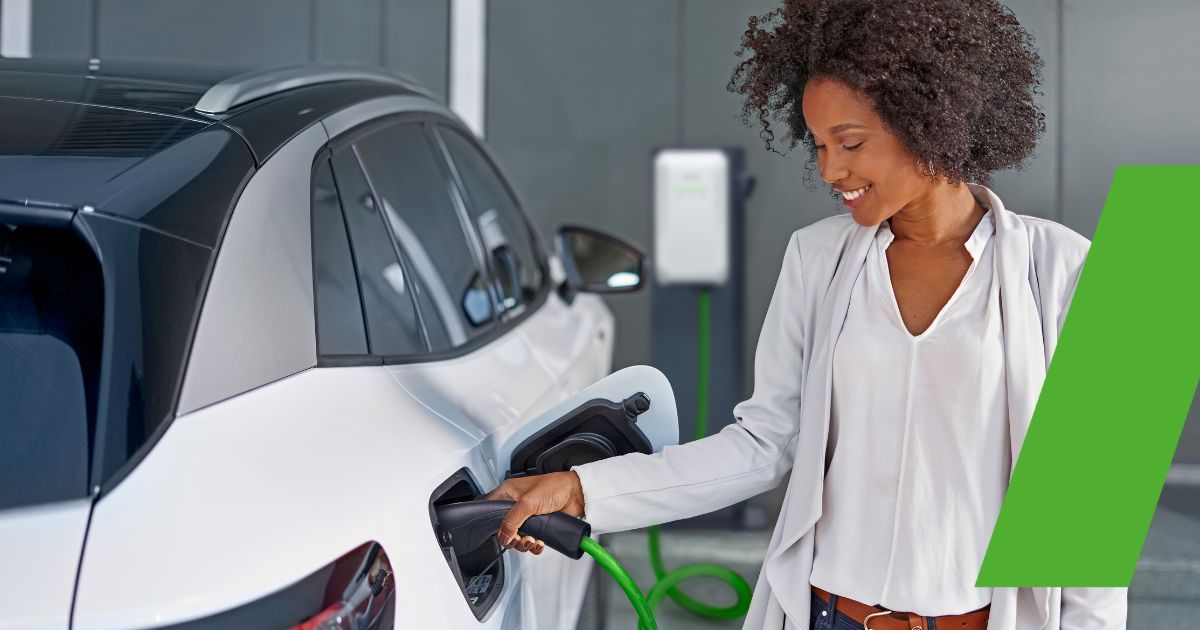Bidirectional Charging – the Game Changer for the Energy Transition
- News
- Business
- Charging
- 7.10.2025
- Reading Time: {{readingTime}} min

Contents
Bidirectional Charging: Turning Electric Cars into Active Energy Storage Systems
Bidirectional charging – that is, the charging and discharging of electric vehicles – is far more than a technical innovation. It represents a paradigm shift. Here, mobility, energy, and digitalisation merge into a new, holistic ecosystem. Vehicles become active participants in the energy system – mobile, intelligently controlled power storage units.
In Austria, there are around 245,000 electric cars. This corresponds to a storage capacity of about 16 GWh – an enormous potential hidden in e-vehicles, even though they currently account for only around 4% of the total vehicle fleet.

This example impressively demonstrates that electric vehicles are far more than mere means of transport: they represent a vast, already existing energy reservoir – a key to stabilising our power grid and accelerating the energy transition.
KEBA Open Innovation Exchange – Diversity as the Key
At the Open Innovation Exchange, KEBA brought together representatives from a wide range of disciplines to discuss one central question: How can we move from concept to real-world practice?
Among the participants were:
Energie AG Upper Austria – Leonhard Schitter (CEO), Alexander Kirchner (CTO), Teresa Pachernegg (Head of Technical Management)
→ one of the largest energy provider in Upper Austria, contributing insights on grid stability and supply security.KEBA – Christoph Knogler (CEO KEBA Group), Stefan Richter (CEO KEBA Energy Automation), Gerhard Weidinger (CTO KEBA Energy Automation), Mathias Knauer (Director Market eMobility, KEBA Energy Automation)
→ as a manufacturer of charging infrastructure, bridging the gap between technology, energy supply, and end users.Siemens Energy – Yusuf Kaya (Head of Portfolio Development and Product Management)
→ as a global player in the energy sector, with expertise in large-scale systems and grid technologies.Clever – Kasper Dahl (Product Strategy and Portfolio)
→ as a Danish charging infrastructure operator, offering practical know-how in e-mobility and energy services.P3 Group – Markus Hackmann (Managing Director), Niko Waxmann (Associate Partner)
→ as a renowned consulting firm focused on e-mobility, charging infrastructure, and new business models.The Mobility House – Marcus Fendt (Managing Director)
→ as an experienced reseller, bringing proven business models from France and the United Kingdom, where bidirectional charging projects are already a reality.
The shared goal: to exchange ideas, broaden perspectives, and identify ways in which technology, open interfaces, and regulation must interact to make bidirectional charging feasible on a broad scale.

Bidirectional Charging as a Game Changer
As Leonhard Schitter, CEO of Energie AG Oberösterreich, emphasises, bidirectional charging is becoming a game changer for energy producers “because it allows us to balance loads more effectively.”
Electric vehicles thus become flexible components within the energy system: they store electricity when there is a surplus and feed it back when the grid needs it.
This creates a new form of grid stabilisation that does not require additional large-scale storage or new infrastructure – a true advantage in an energy system that increasingly relies on variable, renewable sources.

Practice shows: It works – if you’re allowed to do it
However, a concrete example from France shows that bidirectional charging also offers clear benefits for end consumers – and is no longer just a promise for the future: The Mobility House has launched a Vehicle-to-Grid project there, integrating electric vehicles into the power grid. Drivers charge their vehicles free of charge because their cars feed electricity back into the grid when it’s needed.
Real-world experience proves that bidirectional charging already works from a technical standpoint today – the biggest hurdles lie in regulation. Where the legal framework is right, genuine added value emerges for everyone involved – energy providers, vehicle manufacturers, and end customers alike.

The car as an energy storage unit – a revolution on four wheels
When many of these vehicles are connected, an enormous potential emerges: they can feed electricity back into the grid when it’s needed and absorb excess energy when there’s a surplus. In this way, they help stabilise the power grid and promote the use of renewable energy sources.
This opens up new value chains – for energy providers, car manufacturers, and of course, end customers. Electricity can be stored where it is generated and used when it’s truly needed. This makes the energy system more resilient, sustainable, and efficient.
Conclusion: Shaping the future together
Despite this enormous potential, the industry still faces major challenges. A lack of standards, regulatory uncertainty, and the complexity of system integration are currently slowing broader implementation. At the same time, there is strong consensus that Europe’s true strength lies precisely here: in its ability to connect complex systems across company and industry boundaries and to develop joint solutions.
The role of software, interoperability, and open interfaces was highlighted as particularly forward-looking – they are the key to bringing together technology, economic viability, and user-friendliness. Only through close collaboration between all stakeholders from industry, energy, and politics can bidirectional charging move from pilot projects into the market.
The KEBA Open Innovation Exchange demonstrates that when industries think beyond their boundaries and act together, innovation emerges – and the future of mobility becomes the future of energy.








